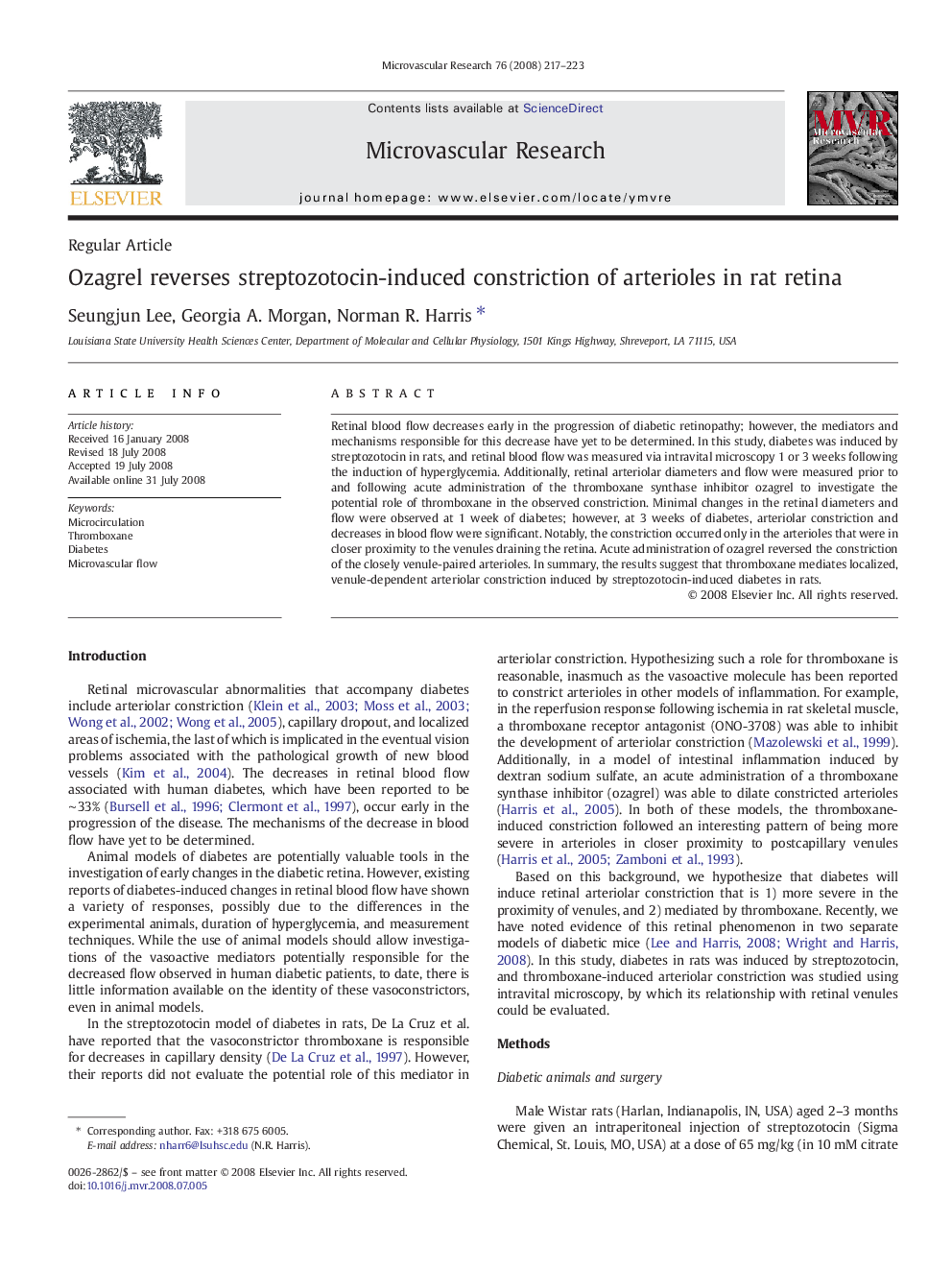| Article ID | Journal | Published Year | Pages | File Type |
|---|---|---|---|---|
| 10827211 | Microvascular Research | 2008 | 7 Pages |
Abstract
Retinal blood flow decreases early in the progression of diabetic retinopathy; however, the mediators and mechanisms responsible for this decrease have yet to be determined. In this study, diabetes was induced by streptozotocin in rats, and retinal blood flow was measured via intravital microscopy 1 or 3Â weeks following the induction of hyperglycemia. Additionally, retinal arteriolar diameters and flow were measured prior to and following acute administration of the thromboxane synthase inhibitor ozagrel to investigate the potential role of thromboxane in the observed constriction. Minimal changes in the retinal diameters and flow were observed at 1Â week of diabetes; however, at 3Â weeks of diabetes, arteriolar constriction and decreases in blood flow were significant. Notably, the constriction occurred only in the arterioles that were in closer proximity to the venules draining the retina. Acute administration of ozagrel reversed the constriction of the closely venule-paired arterioles. In summary, the results suggest that thromboxane mediates localized, venule-dependent arteriolar constriction induced by streptozotocin-induced diabetes in rats.
Keywords
Related Topics
Life Sciences
Biochemistry, Genetics and Molecular Biology
Biochemistry
Authors
Seungjun Lee, Georgia A. Morgan, Norman R. Harris,
